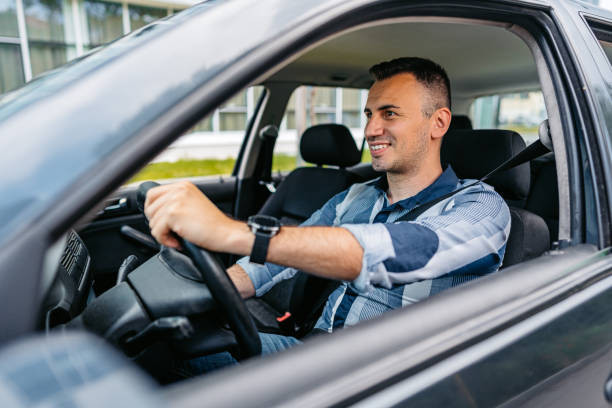Mastering Essential Driving Techniques with Get Drivers Ed
Learning to drive is a big milestone, and mastering essential driving techniques is key to keeping yourself and others safe on the road. Whether you're just starting out or have been driving for years, there’s always room for improvement. At Get Drivers Ed, we focus on comprehensive education and practical training to help you become a confident, skilled, and responsible driver. Let’s explore some key driving techniques every driver should master.
Why Proper Driving Techniques Matter
Safety First
Good driving techniques are the foundation of safe driving. By mastering these skills, you can avoid accidents and make your driving experience smoother.
Preventing Accidents: Using safe driving practices helps prevent collisions and other mishaps.
Following the Law: Sticking to traffic laws and regulations helps you avoid fines and legal trouble.
Building Confidence
Confidence behind the wheel comes from knowing you can handle different driving situations effectively. Mastering essential driving techniques builds this confidence, making you a more capable driver.
Handling Emergencies: Being prepared for unexpected situations allows you to stay calm and react properly.
Navigating Different Conditions: Confidence in your driving skills helps you drive safely in various weather and road conditions.
Key Driving Techniques
Smooth Steering
Smooth steering is crucial for keeping control of your car. It involves gentle, controlled movements of the steering wheel, which helps you make precise turns and navigate curves safely.
Hand Position: Keep your hands at the 9 and 3 o'clock positions on the steering wheel for the best control.
Steering Method: Use the "push-pull" or "hand-over-hand" method to maintain smooth and controlled steering.
Effective Braking
Good braking techniques are essential for stopping safely and avoiding crashes. Knowing how to brake effectively can make a big difference in emergencies.
Gradual Braking: Apply the brakes slowly to avoid skidding and ensure a smooth stop.
Threshold Braking: In emergencies, use threshold braking to apply maximum braking force without locking the wheels.
Defensive Driving
Defensive driving means anticipating potential hazards and being ready to react safely. It involves staying alert and making proactive decisions to avoid accidents.
Maintain Distance: Keep a safe following distance from the car in front of you to allow enough reaction time.
Be Aware: Continuously scan the road ahead, behind, and to the sides to stay aware of your surroundings.
Proper Lane Changing
Changing lanes safely requires careful planning and execution. It’s important to signal your intentions and check your blind spots before moving.
Signal Early: Use your turn signal well in advance to inform other drivers of your intention to change lanes.
Check Blind Spots: Always check your blind spots by looking over your shoulder before changing lanes.
Navigating Intersections
Intersections are common places for accidents. Knowing how to navigate them safely is crucial for preventing collisions.
Observe Traffic Lights: Always obey traffic signals and be ready to stop if the light changes.
Yield Right of Way: Understand and follow the right-of-way rules to avoid conflicts with other vehicles and pedestrians.
Advanced Driving Techniques
Night Driving
Driving at night has its own challenges due to reduced visibility. Mastering night driving techniques helps you stay safe in low-light conditions.
Use High Beams Appropriately: Use high beams when necessary, but switch to low beams when there is oncoming traffic.
Reduce Speed: Drive slower at night to give yourself more time to react to potential hazards.
Driving in Adverse Weather
Bad weather, like rain, snow, and fog, can make driving more difficult. Knowing how to adjust your driving in these conditions is essential.
Increase Following Distance: Leave more space between your vehicle and the one in front of you to allow for longer stopping distances.
Use Headlights: Turn on your headlights in rain, snow, or fog to increase visibility.
The Role of Get Drivers Ed
At Get Drivers Ed, we are dedicated to providing high-quality drivers education that covers all these essential driving techniques and more. Our comprehensive curriculum is designed to prepare you for all aspects of driving, from basic skills to advanced techniques.
Comprehensive Curriculum
Our drivers ed program includes interactive lessons, videos, quizzes, and real-world driving scenarios to ensure you thoroughly understand driving principles.
Interactive Learning: Engaging content that helps you remember information better.
Real-World Scenarios: Practical examples and scenarios that prepare you for actual driving situations.
Experienced Instructors
Our instructors are experienced professionals who provide personalized guidance and support. They are trained to address the unique challenges faced by new drivers, offering the expertise and encouragement needed to build confidence and competence.
Personalized Support: One-on-one instruction tailored to your needs.
Expert Guidance: Professional advice and feedback to help you improve quickly.
Conclusion
Mastering essential driving techniques is crucial for becoming a safe and confident driver. At Get Drivers Ed, we provide comprehensive education and practical training to ensure our students are well-prepared for the road. From smooth steering and effective braking to defensive driving and advanced techniques, our program covers all aspects of driving.
Ready to enhance your driving skills? Enroll in our comprehensive driver education courses today at Get Drivers Ed. Let us help you gain the skills and knowledge necessary for a lifetime of safe and responsible driving.


